On December 11, 1977, Don Deck and Stan Haye visited the Jeffrey Mine popularly known as the Champion Spark Plug Mine on a seven or so mile round trip day hike.
We left Lone Pine at 7 a.m., Independence about 7:30 and arrived at the road head (4WD) about 9:30. We drove north from Bishop on U.S. 6 about 19 miles to White Mountain Ranch Road. We proceeded east on that road about 6 tenths of a mile to the site of the power plant for the mine, then turned left (north) on a road along the east side of the ranch about a quarter mile. We turned right onto Forest Road 4S135 (which became four wheel drive) for about 2.8 miles to the (lower) trailhead.
From the trailhead at about 5560' we hiked up a steep but good trail about a mile and a half to the lower mine camp (Black Eagle Camp) at 7550'. When we visited in 1977 several buildings were habitable complete with beds and stoves. The Mess Hall had a cook stove. The entire camp is maintained by volunteers and more buildings have been restored. Good water is available nearby. Great views of the Sierra. As of August 2016 many additional improvements have been made by volunteers. Do an Internet Search for "Champion Spark Plug Mine" for additional information and pictures/videos.
A Museum in one building is maintained by visitors and is a very interesting attraction. We spent about 40 minutes from road head to camp and about 2 hours at the camp, including lunch.
About 12:30 we headed up the trail to the upper camp. Lower camp is at 7550' more or less, upper camp is at about 9000 or so. Trail is steep and took about 2 hours for the two miles. At the time of our visit it was in good shape. Recent visitors report that rock slides damage parts of it but repairs are made.
In 1977 a number of buildings at the upper camp were suitable for habitation and the Mess Hall also had a stove. On July 21, 1987 all but one building were destroyed by a fire. We examined the buildings, ate, and explored old mine diggings until around 3 p.m. With a 15 minute stop at the lower camp for water (no water at upper camp) it took less than two hours to return to the car - arrived about 4:30 or so as it was getting dark. Very interesting trip.
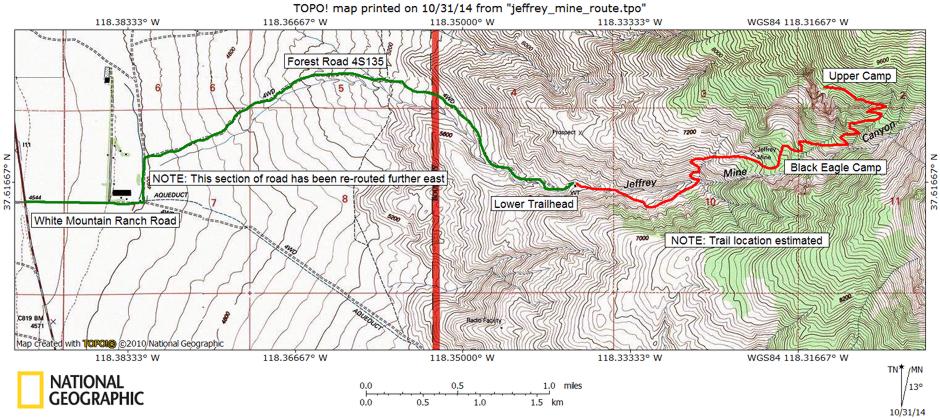
See this 2012 trip report by "Inyoman", this 2012 report, this 2013 report and this 2014 report include other areas but include excellent coverage of the mine. .
This ChampionMineGeology PDF document gives the mine's history with a map and explains what was mined.
Champion Spark Plug Mine and Camp Exploration (Jeffrey Mine)
Tom Wigren 4/30/2018.
Champion Mine, Black Eagle Camp Walking tour - 7/19/2010.
Following pictures taken in 1977.
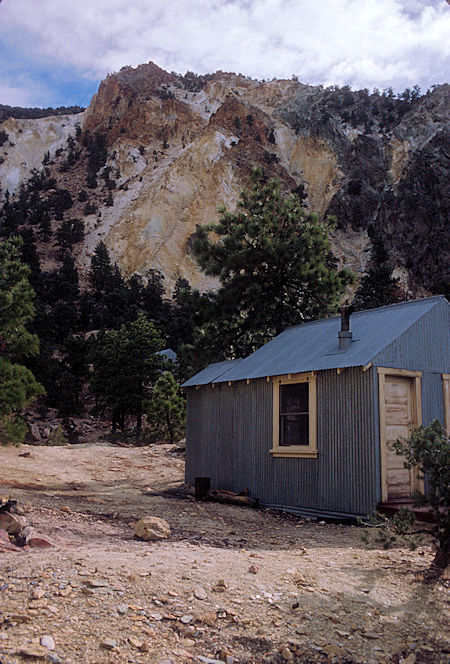
Black Eagle Camp - Jeffrey/Champion Sparkplug Mine
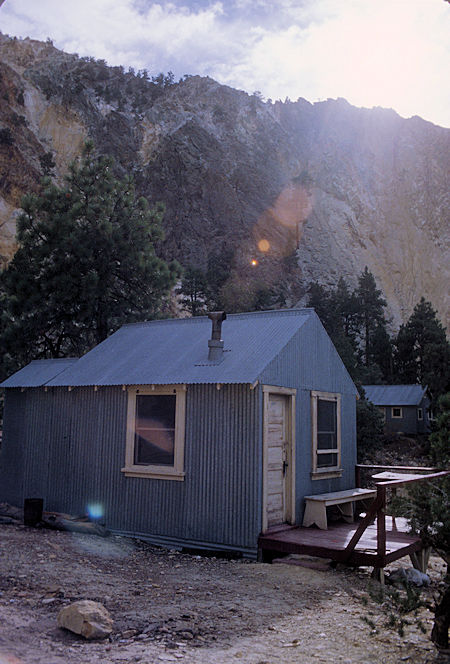
Black Eagle Camp - Jeffrey/Champion Sparkplug Mine
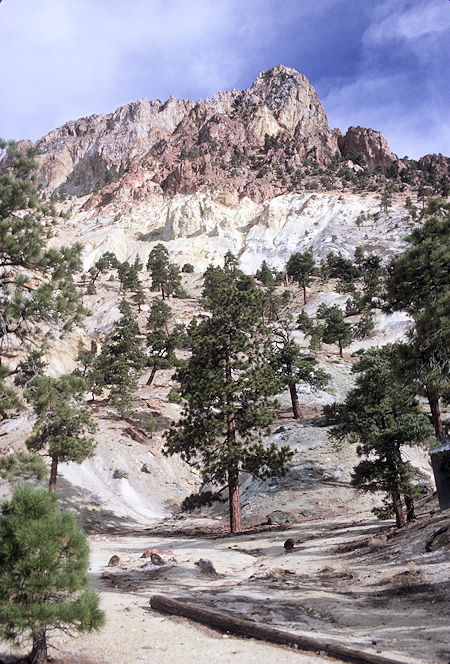
Black Eagle Camp - Jeffrey/Champion Sparkplug Mine
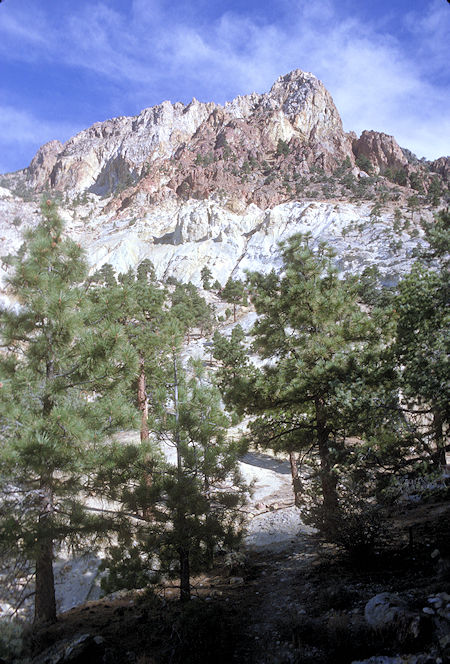
Black Eagle Camp - Jeffrey/Champion Sparkplug Mine
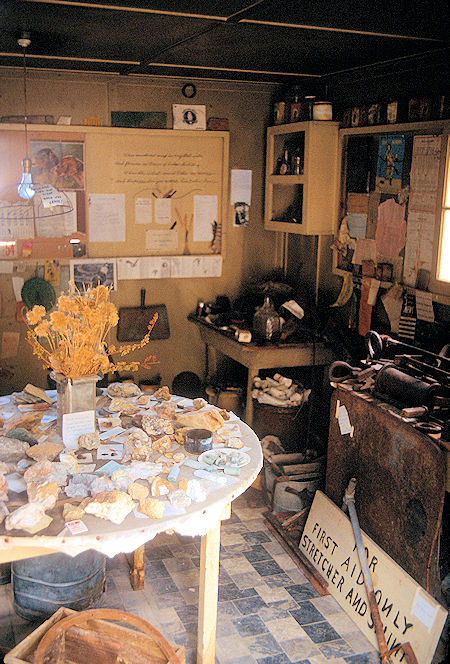
Black Eagle Camp Museum - Jeffrey/Champion Sparkplug Mine
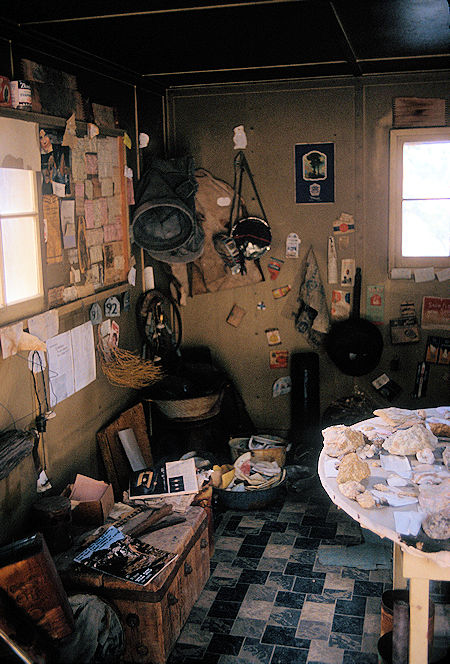
Black Eagle Camp Museum - Jeffrey/Champion Sparkplug Mine
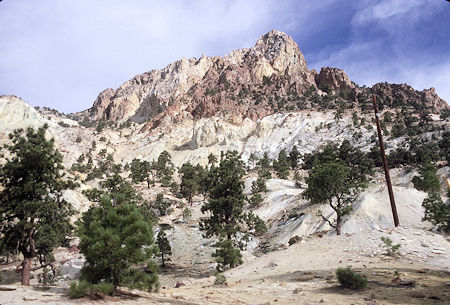
Black Eagle Camp - Jeffrey/Champion Sparkplug Mine
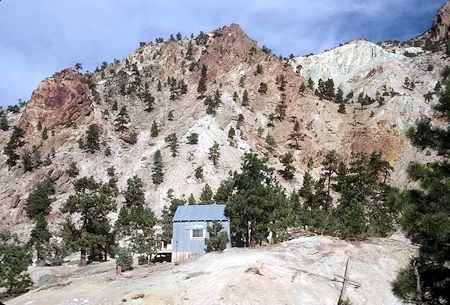
Black Eagle Camp - Jeffrey/Champion Sparkplug Mine
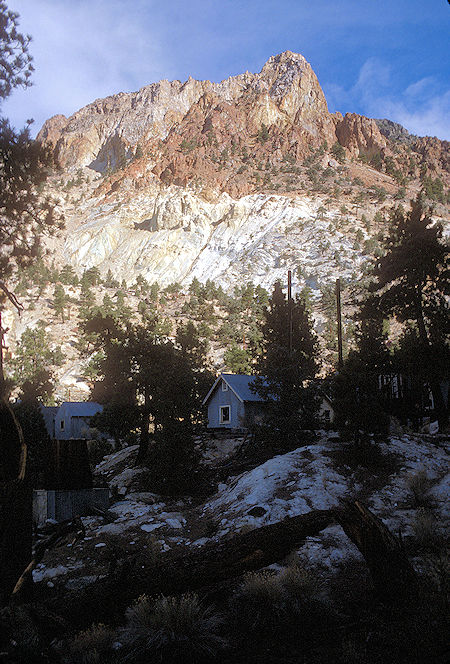
Black Eagle Camp - Jeffrey/Champion Sparkplug Mine
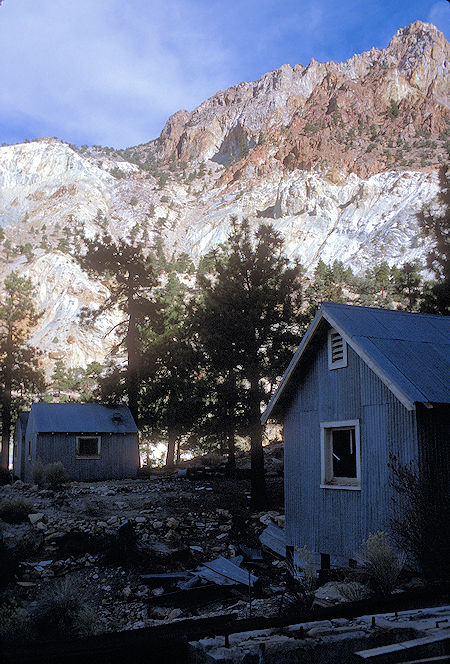
Black Eagle Camp - Jeffrey/Champion Sparkplug Mine
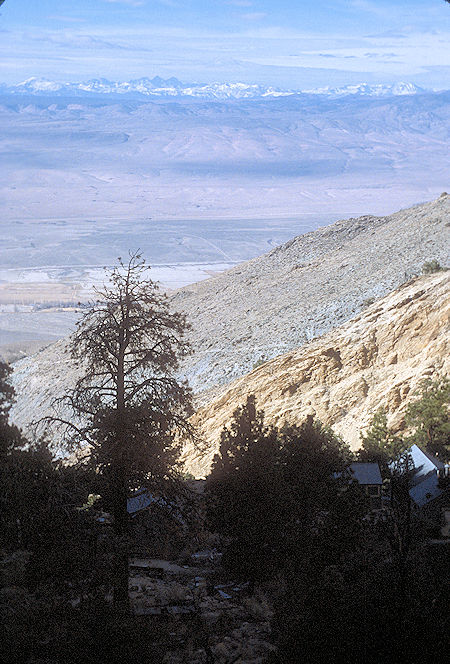
Looking across the Chalfant Valley toward the Sierra Nevada
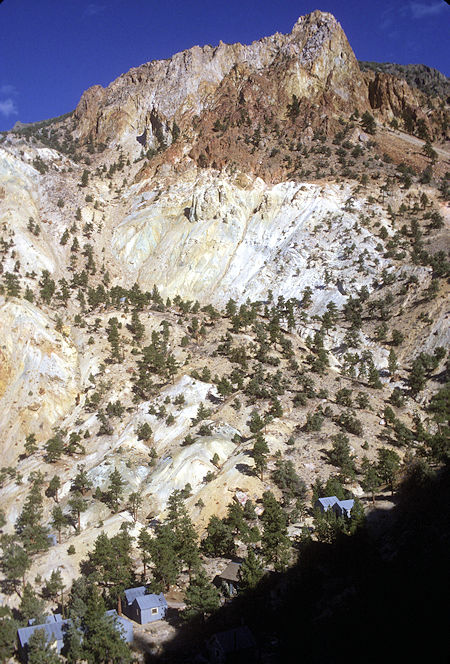
Black Eagle Camp from trail to upper mine
Jeffrey/Champion Sparkplug Mine
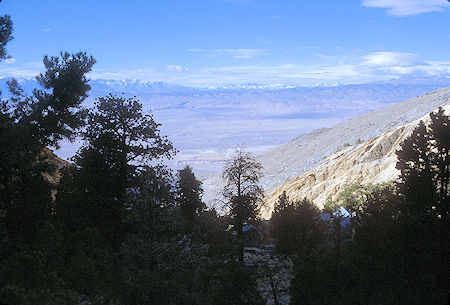
Looking across the Chalfant Valley toward the Sierra Nevada
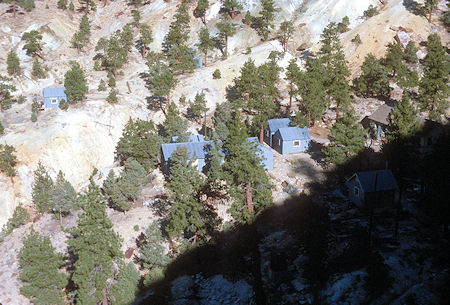
Black Eagle Camp from trail to upper mine
Jeffrey/Champion Sparkplug Mine
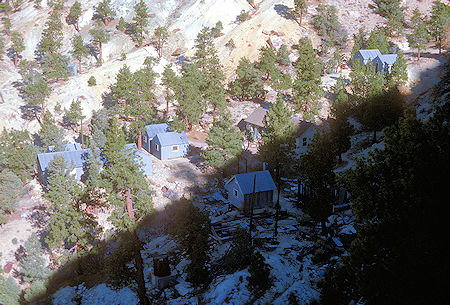
Black Eagle Camp from trail to upper mine
Jeffrey/Champion Sparkplug Mine
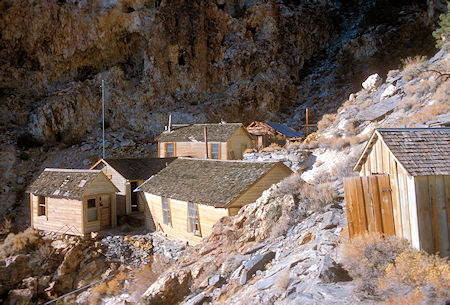
Upper Mine Camp - Jeffrey/Champion Sparkplug Mine
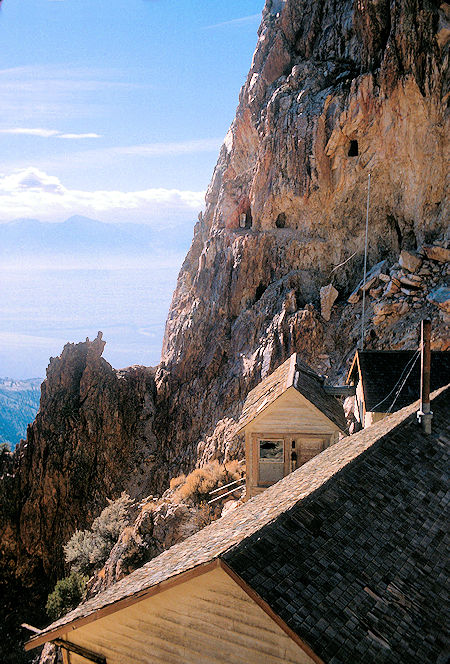
Looking across the upper mine camp at mine tunnels
Jeffrey/Champion Sparkplug Mine
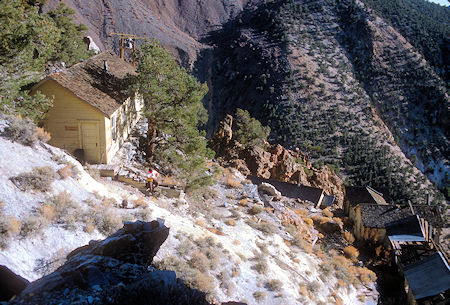
Looking down on upper mine camp from near the tunnels
Jeffrey/Champion Sparkplug Mine
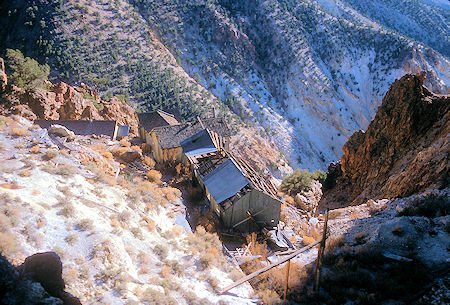
Looking down on upper mine camp from near the tunnels
Jeffrey/Champion Sparkplug Mine
This article by Gregg Wilkerson (2014): MINING HISTORY AND ECONOMIC GEOLOGY OF THE WHITE MOUNTAINS, INYO AND MONO COUNTIES, CALIFORNIA has extensive information about this and other mines in the area including pictures and information about the various minerals mined.
The Introduction about the Champion Mine from that article as written by D.D. Trent describes the Champion Andalusite Mine as follows: "Clearly the Champion Andalusite Mine, also known as the Jeffrey Mine, is one of the world's most unusual mines. Not only was it unique geologically, but also was its mining method. In the 1920s, the Champion mine was the only commercial source of andalusite known in the world, a remarkable fact considering that andalusite is a mineral common in many metamorphic rocks"
"Andalusite is an aluminum silicate mineral, which the Champion Sillimanite Company of Detroit, Michigan, processed to manufacture high temperature refractory materials such as automobile spark plugs and chemical laboratory porcelain (remember Gooch crucibles used in quantitative chemistry laboratory classes?). Andalusite has long since been replaced by a synthetic refractory material called mullite."
The deposit was discovered in 1917 by Adolf Knoph but no development work was undertaken until 1921 when the site was located by Dr. J.A. Jeffrey, a dental surgeon who had some experience in mining and an interest in mineralogy. With the help of an enthusiastic prospector he located the andalusite deposit at the head of what was then known as Dry Canyon.
Jeffrey bought a ranch at the base of the White Mountains that became the base of operations for the mine. In addition, the ranch provided forage to feed the mules that packed the ore down the mountain and packed the food and supplies, including 600 pound air compressors, to the mine camps up the mountain.
Dr. Charles Woodhouse, Jeffrey's son-in-law, became the general manager of the corporation. He designed and supervised the building of the 4.5 mile trail from the ranch to the mine camps.
The mine operated from 1921 to 1945 producing 26,457 tons of andalusite valued at $183,992. Principle production, from 1922 to 1936, amounted to about 20,000 tons of 53 percent andalusite.
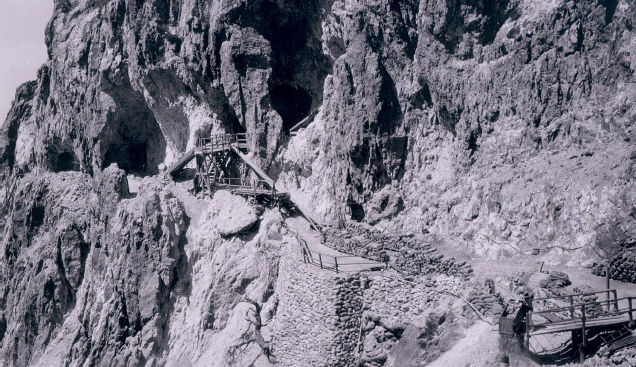
Upper workings of the Champion Andalusite Mine showing rock cribbing, tunnel portals and scaffolding on the cliff, ca. 1930 (Eastern California Museum)
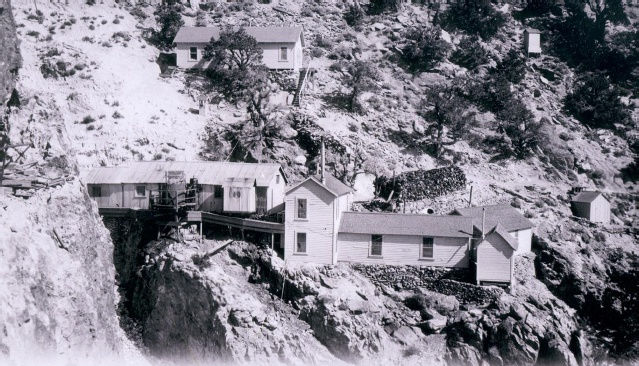
Upper mine camp of the Champion Mine, ca. 1930. All but the upper building were destroyed by fire in 1987 (Eastern California Museum)
The lower [mine] camp at about 7,500 feet elevation included the cook house, bunk houses, a washhouse, a machine shop and a blacksmith shop. The cook house boasted a commercial size cooking range as well as a walk-in refrigerator - both hauled up over 3,000 vertical feet on the 4.5-mile switchback trail.
Packing out the ore required use of an aparéjo (Spanish, harness or pack saddle), a pack saddle used by mule freighters. It consisted of a large leather "envelope" stuffed with hay until it was about six inches thick and large enough to cover the mule for the heavy loads to be carried. Two 95-pound sacks of ore were loaded on each side of the aparéjo for the trip down the trail.
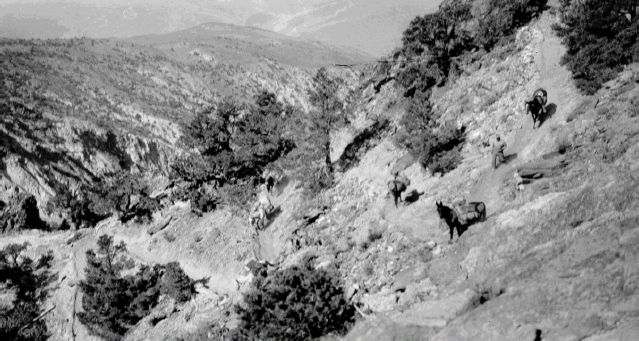
Pack mules and a packer at a switchback on the steep trail packing out ore to the lower station of the Champion Mine (Eastern California Museum)
Strings of pack mules packed the ore down the steep trails to a platform at the base of the trail where the ore was loaded into sacks containing about 100 pounds each. From the platform's the ore was trucked to a loading station on the Nevada & California narrow gauge railroad (the "SlimPrincess", equipment and rolling stock of which may be seen at the Laws Railroad Museum and Historic Site near Bishop).
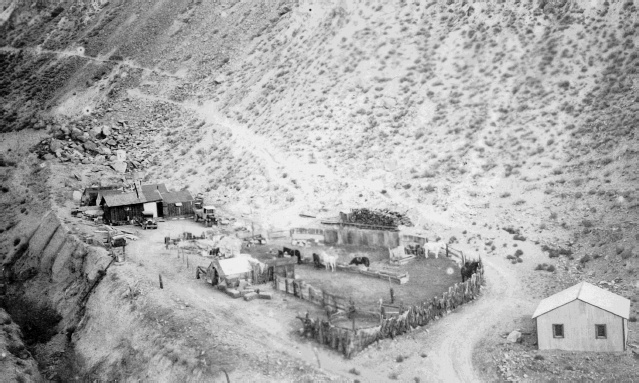
Champion Mine. The mule corals and base of the 4.5 mile trail where trucks were loaded with sacks of ore (Eastern California Museum)
The operation included 16 mules and two packers. There were two trips a day, using two strings of eight mules, winter and summer. Obviously, developing and operating this mine was extremely difficult. Nevertheless, it continued to operate even in its later years as the reserves became depleted and a competing economic process for making mullite had been developed.
At Mina, Nevada, the ore was transferred to standard gauge Southern Pacific Railroad trains and shipped to Detroit.
Electricity for the camps was supplied by a hydroelectric plant on the Jeffrey ranch at the base of the mountain and transmitted five miles to the mine camps. Wire, hardware, and power poles were packed up the steep mountain trail by mules. Two air compressors, one at each the lower and upper deposits, powered air drills.
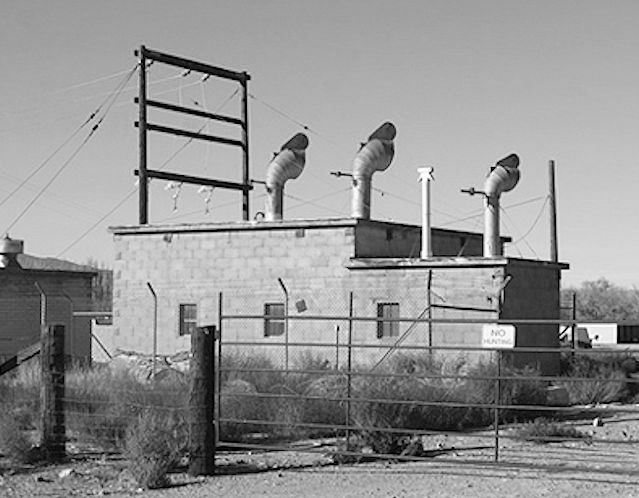
Electricity for the camps was supplied by a hydroelectric plant on the Jeffrey ranch
The operation closed down in 1945 and the Champion Mine reverted to public domain in 1982.
On August 26, 2017, at a showing in Bishop of an old movie showing the Champion Sparkplug mine work back in the 20s up until it closed in 1946, Eighty-eight year old George Clarkson, who worked at the mine, told several stories about how a mule could carry a 600 pound cast iron block for a compressor up that steep trail. They had rigged a tripod with a chain fall to raise the load off the mule to let her rest from having that 600 pounds on her back on the steep trail. But while they were moving the tripod to the next spot, she started off uphill with that load, and never stopped until she got to the camp above.
George was employed to get electrical power generated at the ranch below (Hydro), and get it up the hill to the mine to run the compressors for jackhammers. The power poles were 43 feet long, and were carried up the switchbacks by two mules that had a turntable on their saddles. He described how they would have to alternate going forward and backward to get the pole around the switchbacks. Think about it.
The following video is taken from a longer video that includes a second mine and the Ranch operation which can be seen on the Eastern California Museum website here.
Champion Spark Plug Mine and Camp (Jeffrey Mine).
Thank you to the Eastern California Museum in Independence, California and many other people who have documented and provided photographs about this mine. Be sure to checkout the various reports linked to above.